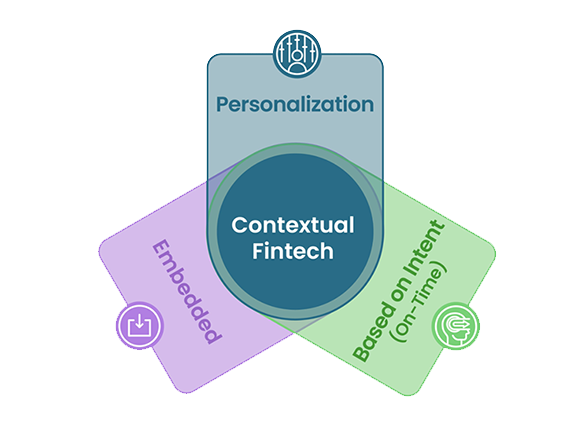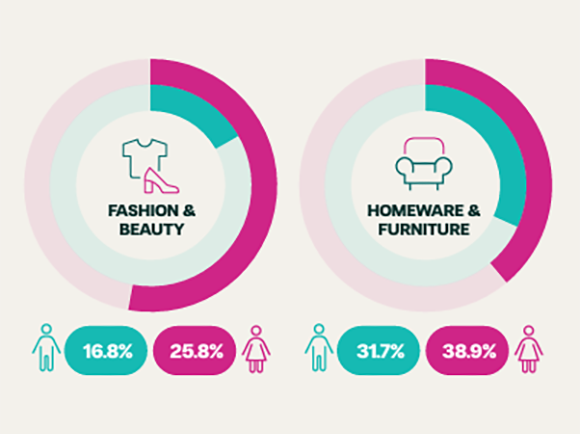Retail finance UX expert spills the beans: tips to improve your customer journey

Understanding the consumer journey is essential to crafting high converting user experience (UX) designs for embedded retail finance. It’s not just about providing financial solutions it’s about delivering seamless journeys that align with consumer expectations. From embedded journeys to intuitive interfaces, you must optimise every touchpoint to enhance user satisfaction and drive conversions.
Why is this important? Around 70% of baskets are abandoned at checkout – the most critical part of the customer journey. By removing friction from the process, purchase completions improve, which enhances the outcomes for merchants and their customers.
To help you to understand how to improve your retail finance journey, we sat down with Neil Thorne, Senior Product Designer at Divido. In this interview he spills the beans on how to create seamless omnichannel experiences, optimise your retail finance journeys, and leverage revolving credit to foster customer loyalty. Here are his top tips.
1. Integrate every touchpoint to create a joined-up experience
Whilst most retail shoppers conduct research online before buying, most bigger ticket retail finance transactions still happen in-store. That’s because furniture, electronics, and white goods are experiential products that are high value. Customers usually want to see, touch, and play with these goods before making a purchase.
“Your online journey must be seamless, but so too should your in-store and telephone journeys,” said Neil. “Assisted selling is one of the best ways to build a relationship with your customers – it’s your chance to educate and up-sell. Make it easy for your salesperson to see available plans, deposit requirements and what monthly payments would be like for example if an up-sell product is added.”
“Your sales representatives need a point-of-sale system that is intuitive, easy to use and requires minimal training. Sales teams may miss or forget training, so the system must be intuitive. Retailers should focus on eliminating friction from every touchpoint. Automate as much as possible, like form fills. Sales teams want to focus on selling, not on filling forms. Automatically validate and auto-complete data where possible to reduce manual errors.”
2. Track, measure and improve your application process to increase conversions
You may have fantastic products, a great website and an award-winning retail finance solution, but if your customers are not converting, something is going wrong. Lenders need to keep a close eye on the data and see how journeys perform under different circumstances and tweak where necessary.
It is important to have the right finance plans for the products you’re offering, and each finance plan needs a tailored UX. Take Pay-in-3 (Buy Now, Pay Later) as an example. This works well for baskets of £250 and under, but bigger baskets need longer terms to make monthly repayments affordable. Smaller baskets require sleeker journeys (you don’t need a mortgage application for a pair of headphones) whilst bigger baskets naturally need a little more positive friction.
“With so many variables in finance plans, like deposit requirements, term length, fees, and deferred payment periods, we want customers to feel fully informed when considering the most suitable plan for them. We have iterated, and simplified how we display plans and label information. And ultimately, we have followed the data to decide how to deliver UX that informs and converts.”
“Any improvement that can uplift application completion rates can massively impact the bottom line,” says Neil. “You must carefully track where the pain points are in your customer journey and address each of them. Fortunately, there are clever ways to do this.”
“A progress bar that shows the number of steps in the journey gives customers a view of what is expected of them and allows them to access how much time and effort to invest. When there is no sense of progress customers don’t know how long this process takes or how many questions will be asked, which can feel like an endless journey.”
“An ‘auto-save’ feature lets customers return to their application later. Set up an email nurture flow with automated reminders that let your customers know if they need to do something A nudge here and there can significantly boost conversion rates.”
Neil goes on to say, “Our application journeys follow best practice patterns for good, reliable checkout processes. We focus on correctly capturing information as succinctly as possible, with minimal distractions. It’s important that customers know what they are applying for. If you are booking flights, you want to make sure you have the right flight time, seat, and luggage allowance selected before paying. Quite often, details of the finance plan are displayed on the first page and then not until after the credit decision has been made. We want customers to feel confident at every step. We have delivered an uplift in conversions by always keeping details of the finance plan in view or at least accessible via a single click.”
3. Use Embedded revolving credit to drive repeat spend
A major pain point for merchants is not just acquiring customers but doing so in a profitable way. One study shows the cost of acquiring customers has increased by over 200% over the past 10 years. Certainly, for merchants who sell generic items, it’s often more profitable to double down on keeping existing customers happy and encouraging repeat purchase.
“Revolving credit and BNPL store cards are making a major comeback in the UK,” says Neil. “In 2023 a leading UK fashion/food retailer made its existing Divido solution available in its physical stores. Customers simply scan a QR code at the checkout in-store to make a purchase using their revolving credit account. It now provides a fantastic omnichannel experience and helps this top high street retailer increase loyalty and repeat spend.
“The trick is in making it easy for both merchants and their customers. Merchants must be able to easily embed a consumer portal within their apps and website for consumers to see and manage their account. The portal must be intuitive to use and offer key features, like balance displays and the option to request and increase in credit.”
“You then need a hook to get consumers to sign-up to accounts. This retailer client offers 20% off your first purchase to incentivise their customers to sign-up, for example.”
In summary
From omnichannel integrations to leveraging emerging trends like embedded revolving credit, you must prioritise user satisfaction and adapt to evolving consumer needs to thrive in an increasingly competitive market.
“By harnessing customer data responsibly, you can deliver hyper-personalised experiences that build trust throughout the customer journey,” says Neil, “As the retail finance landscape continues to evolve, prioritizing user-centric design and technological innovation will be imperative for sustained success.”
You might also
be interested in
Keen to know more?








